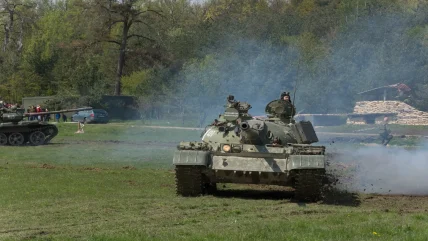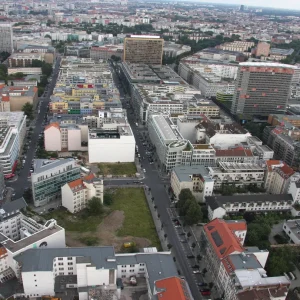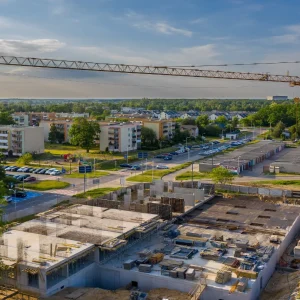
Urban policy, planning, and transportation systems are the backbone of any nation’s infrastructure, ensuring the smooth functioning of cities and the well-being of their inhabitants. However, interstate armed conflicts pose significant challenges to these systems, disrupting daily life and threatening long-term sustainability. This article delves into the multifaceted impact of such conflicts on urban policy, planning, and transportation, offering a comprehensive analysis relevant to professionals and stakeholders in these fields.
The Disruption of Urban Policy and Governance
1. Policy Redirection and Emergency Responses
Interstate armed conflicts necessitate a rapid redirection of urban policies. Governments often have to prioritise defence and security over long-term urban development goals. This shift can lead to the suspension or cancellation of key projects aimed at improving urban infrastructure, housing, and public services.
2. Centralisation of Power
During times of conflict, there is often a centralisation of power as national governments take control of local jurisdictions to ensure uniformity in response and resource allocation. This can undermine local governance structures and impede the implementation of policies tailored to the specific needs of different urban areas.
3. Resource Allocation and Financial Constraints
Conflicts drain financial resources that would otherwise be allocated to urban development. Defence spending surges, leaving fewer funds available for infrastructure projects, social programmes, and other urban initiatives. This can result in delayed maintenance and deterioration of existing urban infrastructure.
Urban Planning Under Siege
1. Destruction and Reconstruction
One of the most immediate impacts of armed conflict is the physical destruction of urban areas. Buildings, roads, bridges, and public facilities are often targets, either directly or as collateral damage. The destruction necessitates extensive reconstruction efforts, which can take years and require substantial investment.
2. Population Displacement and Housing Crises
Conflicts frequently cause significant population displacement, both within and across borders. Urban planners must contend with sudden influxes of refugees and internally displaced persons (IDPs), leading to housing crises, overcrowded shelters, and the emergence of informal settlements. These developments strain urban services and infrastructure.
3. Land Use and Spatial Planning Challenges
The influx of displaced populations and the need to rebuild destroyed areas present complex land use and spatial planning challenges. Urban planners must find ways to integrate new housing and facilities without compromising existing urban frameworks. This often requires innovative approaches and flexible zoning regulations.
Transportation Systems in Conflict Zones
1. Damage to Transportation Infrastructure
Transportation networks are particularly vulnerable during conflicts. Roads, railways, airports, and ports can be targeted to disrupt movement and supply chains. The destruction of these networks hampers not only civilian mobility but also the delivery of essential goods and services, including humanitarian aid.
2. Mobility Restrictions and Checkpoints
In conflict zones, mobility is often restricted by military checkpoints, roadblocks, and curfews. These measures, while necessary for security, severely limit the movement of people and goods. Urban planners and transportation officials must devise strategies to maintain some level of functionality under these constraints.
3. The Role of Alternative Transport Modes
With traditional transportation networks compromised, alternative modes of transport such as bicycles, motorcycles, and pedestrian pathways gain importance. Urban planners might need to enhance and adapt these alternatives to ensure mobility and access to essential services.
Long-term Impacts and Recovery Strategies
1. Post-conflict Urban Renewal
The end of a conflict marks the beginning of a long and arduous process of urban renewal. This involves not only rebuilding physical infrastructure but also addressing the social and economic scars left by the conflict. Comprehensive planning is required to restore functionality, improve resilience, and foster social cohesion.
2. Resilience and Disaster Preparedness
Urban policy and planning must incorporate resilience and disaster preparedness to mitigate the impacts of future conflicts. This includes building robust infrastructure, establishing emergency response protocols, and creating resilient communities capable of withstanding and recovering from disruptions.
3. International Cooperation and Funding
Post-conflict recovery often necessitates international cooperation and funding. International organisations, donor countries, and NGOs play crucial roles in providing the financial resources and technical expertise needed for reconstruction and development. Urban planners and policymakers must work closely with these entities to ensure effective and sustainable recovery efforts.
Case Studies: Learning from Experience
1. The Syrian Civil War and Urban Devastation
The Syrian Civil War, ongoing since 2011, provides a stark example of the impact of armed conflict on urban areas. Cities like Aleppo, Homs, and Raqqa have witnessed extensive destruction, resulting in the displacement of millions and the near-total collapse of urban infrastructure. The war has highlighted the importance of international aid in urban recovery and the need for innovative approaches to rebuilding war-torn cities.
2. Ukraine’s Struggle and Resilience
The conflict in Ukraine, particularly since the annexation of Crimea in 2014 and the ongoing conflict in Eastern Ukraine, has severely impacted urban centres. The destruction of infrastructure and the displacement of populations have posed significant challenges. However, the resilience shown by Ukrainian cities in maintaining essential services and beginning reconstruction efforts offers valuable lessons in urban resilience and adaptability.
3. The Balkans: Post-conflict Reconstruction
The Balkan conflicts of the 1990s, including the Bosnian War and the Kosovo conflict, resulted in extensive urban damage and displacement. The subsequent reconstruction efforts, supported by international organisations and the European Union, have demonstrated the importance of comprehensive planning and international support in post-conflict urban recovery. These efforts have led to the revitalisation of cities like Sarajevo and Pristina, showcasing successful strategies in rebuilding urban areas.
Policy Recommendations for Conflict-Affected Urban Areas
1. Integrating Conflict Sensitivity in Urban Planning
Urban planners must integrate conflict sensitivity into their planning processes. This involves understanding the potential triggers of conflict, designing infrastructure that can withstand and adapt to disruptions, and fostering inclusive policies that address the needs of all urban residents, including marginalised and displaced populations.
2. Enhancing Local Governance and Community Participation
Strengthening local governance structures and promoting community participation are crucial for effective urban planning in conflict-affected areas. Local authorities and communities possess valuable insights into the specific needs and challenges of their areas. Inclusive planning processes that involve these stakeholders can lead to more resilient and responsive urban policies.
3. Leveraging Technology and Innovation
Technological advancements and innovative approaches can play a significant role in mitigating the impacts of armed conflict on urban areas. Remote sensing, GIS mapping, and data analytics can aid in damage assessment and planning reconstruction efforts. Additionally, innovations in construction materials and techniques can enhance the resilience of rebuilt infrastructure.
4. Prioritising Sustainable and Resilient Infrastructure
Post-conflict reconstruction provides an opportunity to prioritise sustainable and resilient infrastructure. This includes building energy-efficient structures, implementing green urban planning practices, and developing transportation systems that reduce environmental impact and enhance resilience to future conflicts and disasters.
Conclusion
Interstate armed conflicts pose significant challenges to urban policy, planning, and transportation systems. The immediate impacts include physical destruction, population displacement, and disruption of mobility. In the long term, conflicts necessitate comprehensive recovery efforts, international cooperation, and the integration of resilience and sustainability into urban planning.
By learning from past conflicts and adopting innovative and inclusive approaches, urban planners and policymakers can mitigate the adverse effects of armed conflicts and build more resilient and sustainable urban environments. The experiences of cities affected by conflicts like those in Syria, Ukraine, and the Balkans offer valuable lessons in the importance of planning, adaptability, and international support in addressing the complex challenges posed by armed conflicts on urban areas.






